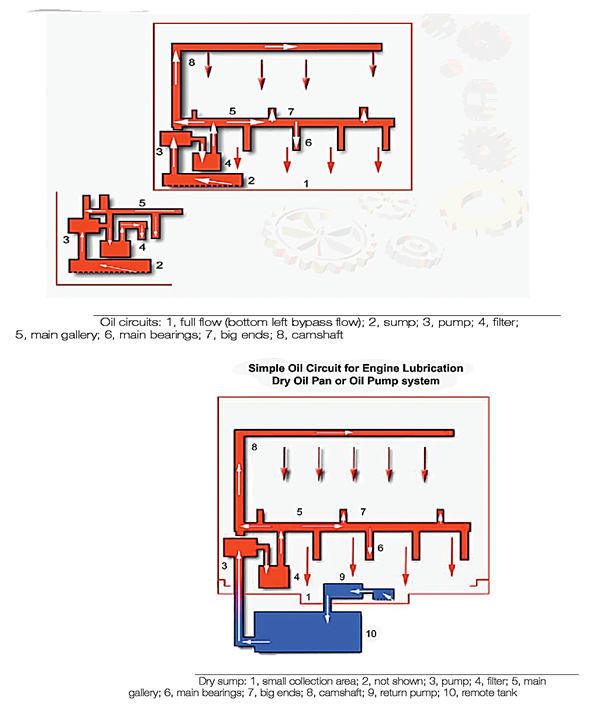SKEDSOFT
Introduction:
Even new engines can contain very small particles of metal left over from the manufacturing process or grains of sand that have not been removed from the crankcase after casting. Old engines continually deposit tiny bits of metal worn from highly loaded components such as the piston rings. To prevent any of these lodging in bearings or blocking oil ways, the oil is filtered.
Features of oil filters:
- The primary filter is a wire mesh strainer that stops particles of dirt or swarf from entering the oil pump.
- This is normally on the end of the oil pick-up pipe.
- An extra filter is also used that stops very fi ne particles.
- The most common type has a folded, resin-impregnated paper element. Pumping oil through it removes all but smallest solids from the oil.
Oil circuits:

- Most engines use a full-flow system to filter all of the oil after it leaves the pump.
- The most popular method is to pump the oil into a canister containing a cylindrical filter.
- From the inner walls of the canister, the oil flows through the filter and out from the centre to the main oil gallery.
- Full-flow filtration works well provided the filter is renewed at regular intervals.
- This valve prevents engine failure, but the engine will be lubricated with dirty oil until the filter is renewed. This is better than no oil!
- A bypass filtration system was used on some vehicles.
- This system only filters a proportion of the oil pump output. The remainder is fed directly to the oil gallery. At first view this seems a strange idea but all of the oil does eventually get filtered. The smaller amount through the filter allows a higher degree of filtration.
- For many high-performance applications, a larger oil supply is needed so that engine heat can be removed by the engine oil as well as by the engine-cooling system.
- A separate reservoir of oil is held in a remote tank and drawn into the main oil pump for distribution throughout the engine in the same way as a wet-sump system. The oil returns to a small sump below the engine.
- A scavenge pump, with a pick-up pipe in the sump, draws oil out of the sump and delivers it back to the reservoir. An oil cooler is usually fitted in this return circuit.